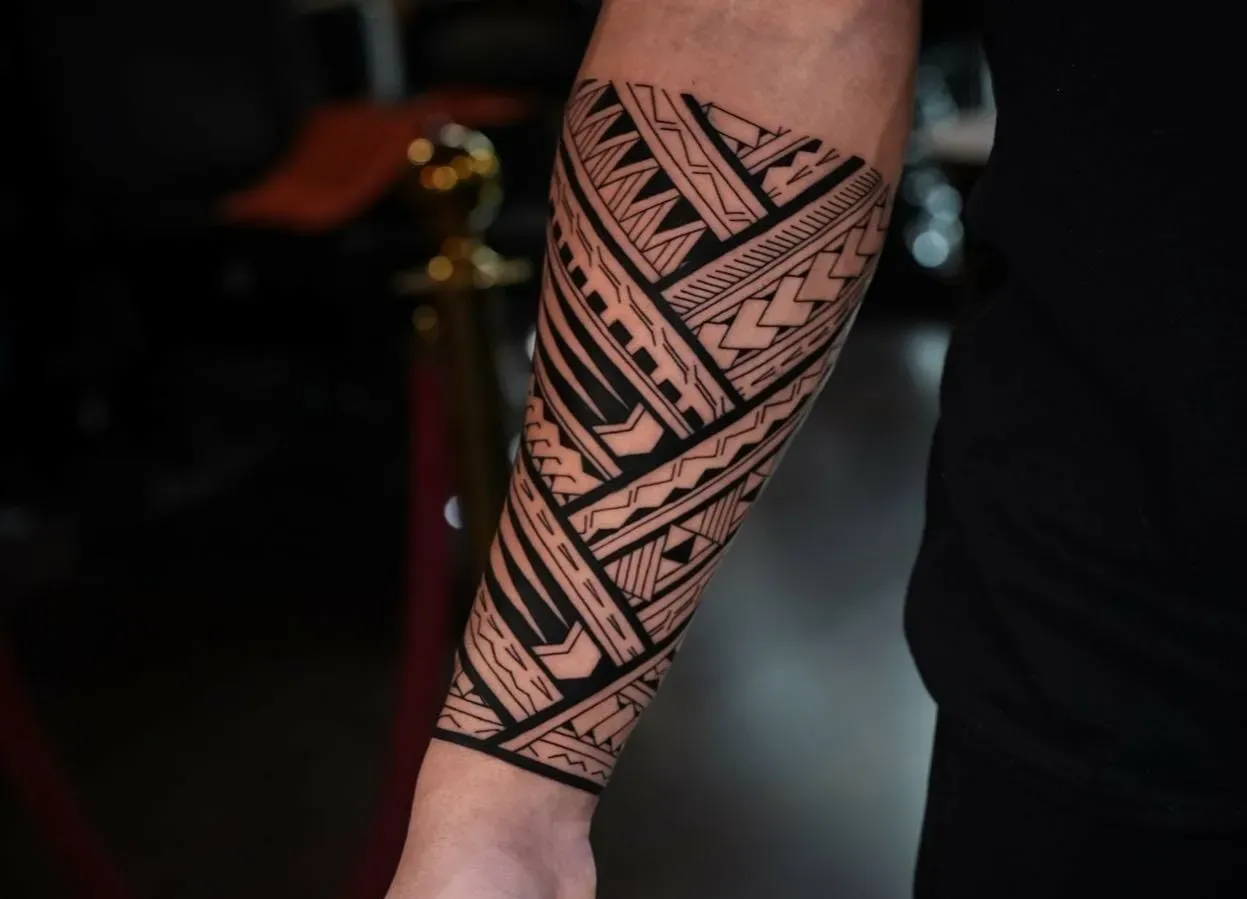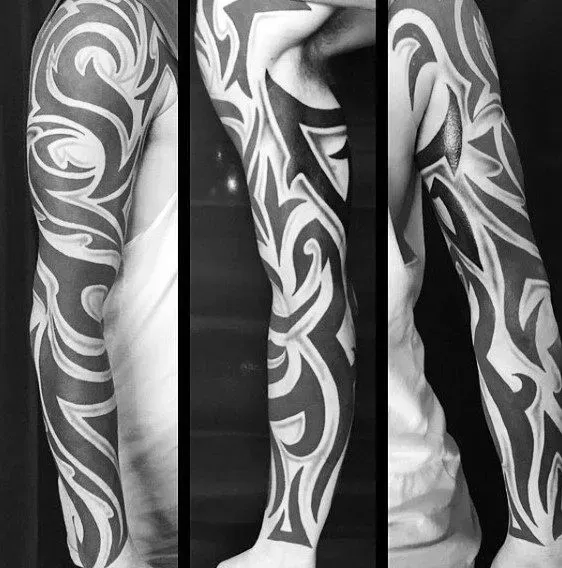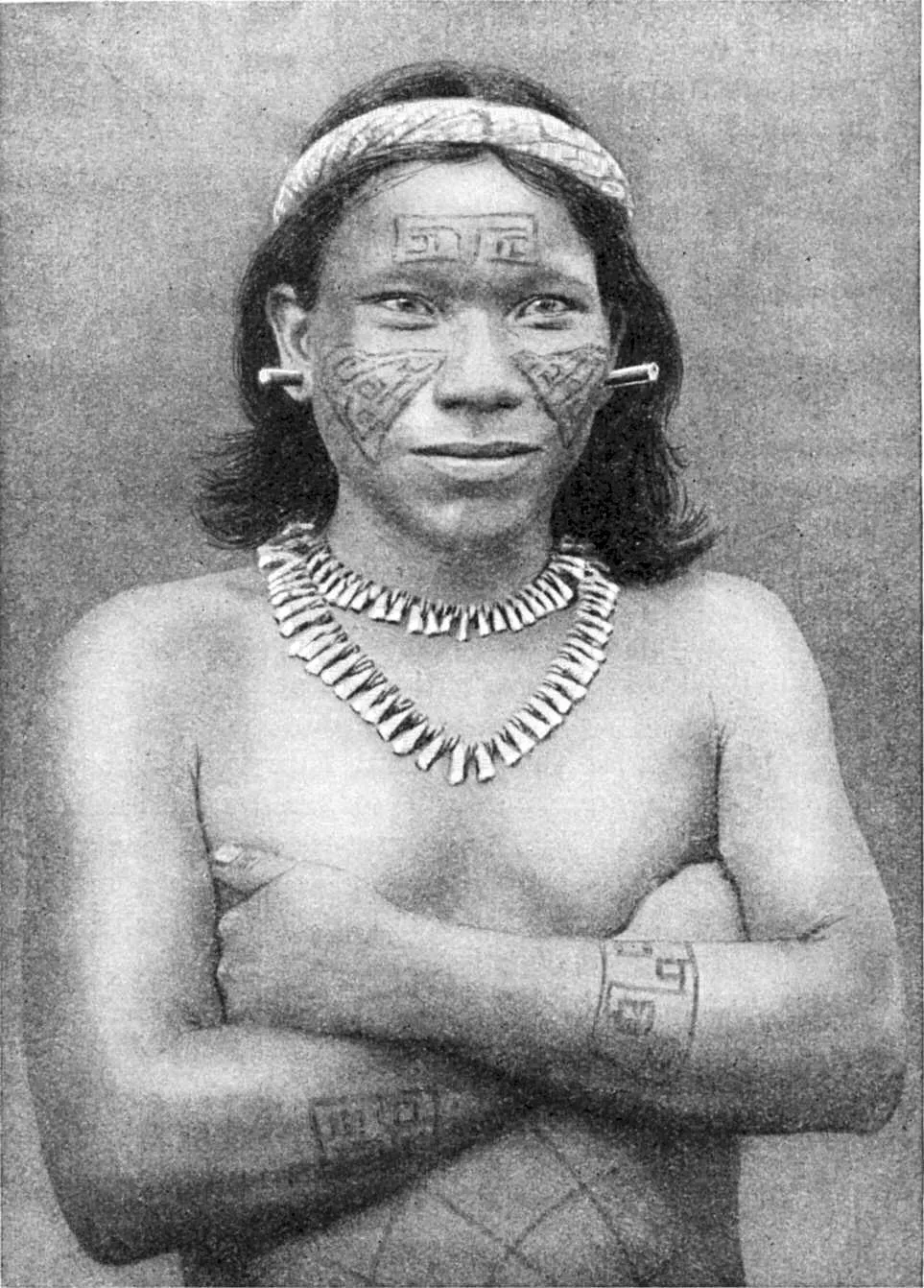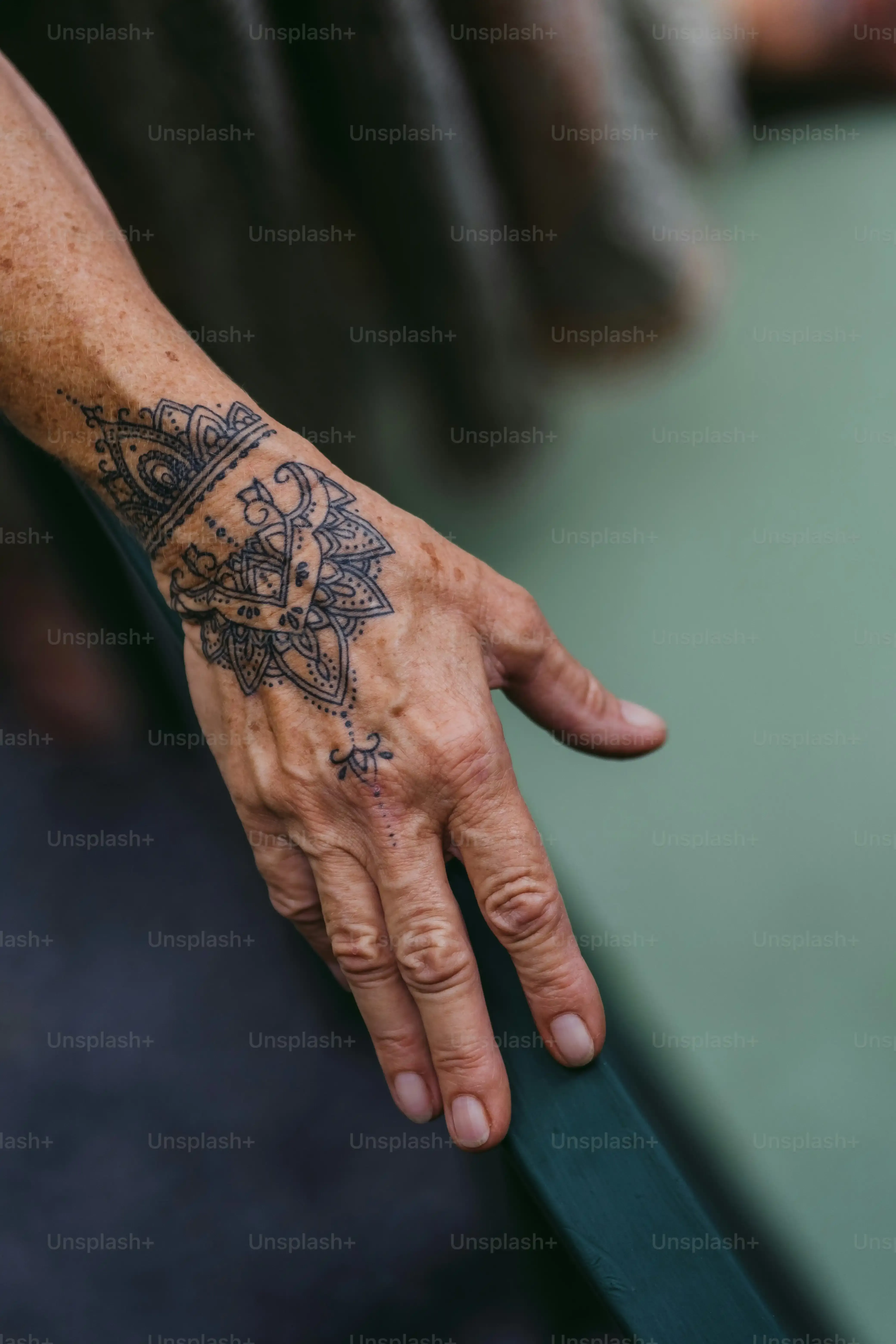Table of Contents
Walk into any tattoo shop or scroll through design ideas online, and you'll likely encounter tribal tattoo designs on arm. These aren't just random cool patterns; they often carry weight and history, though sometimes that history gets lost in translation. People get drawn to the bold lines and flowing shapes, imagining a connection to something ancient or powerful. But what exactly are you signing up for when you choose a tribal design for your arm? Is it just aesthetics, or is there more to the story?
Understanding Tribal Tattoo Designs on Arm: More Than Just Ink
Understanding Tribal Tattoo Designs on Arm: More Than Just Ink
So you're looking at tribal tattoo designs on arm, thinking about getting some serious ink. Great. Just know you're not just slapping a cool pattern on your bicep. These designs, even the generic ones you see everywhere, trace their roots back to cultures where tattoos weren't just decoration. They were badges of honor, markers of status, records of achievement, or spiritual symbols. Ignoring that history isn't a crime, but understanding it adds a layer of depth, or at least prevents you from walking around with a design that means 'I really like pineapples' in some ancient dialect when you thought it meant 'fierce warrior'.
Tracing the Roots: History Behind Tribal Arm Tattoos
Tracing the Roots: History Behind Tribal Arm Tattoos
Alright, so you're digging into the history of tribal arm tattoos. Good. This isn't just about cool patterns; it's about practices that were central to identity for people across the globe, long before Westerners showed up with their ships and opinions. Think ancient Celts, Pacific Islanders, indigenous peoples in North and South America, various African tribes – they all used tattooing, and often the arm was prime real estate. These weren't impulse decisions; they were often tied to rites of passage, marking a warrior's first battle, a successful hunt, entering adulthood, or showing lineage and social standing. The arm, being visible and a tool for work and combat, became a canvas for these significant life events and identifiers. It was essentially a living resume etched into the skin.
Picking Your Path: Popular Tribal Tattoo Designs on Arm
Navigating the Polynesian Powerhouses
When people picture tribal tattoo designs on arm, often they're thinking of the bold, intricate patterns from Polynesia, specifically Samoan (pe'a) and Maori (Ta Moko) styles. These aren't just cool shapes; they're steeped in history, representing lineage, status, and personal achievements. Samoan designs often use geometric patterns like lines, dots, and curves, densely packed. Maori designs, on the other hand, are known for their swirling lines (koru) and facial tattoos, though arm pieces are common too. Getting one of these means respecting the culture. Don't just pick a cool pattern off the internet; find an artist who understands the heritage, or work with them to create something inspired by, but not directly copying, sacred traditional patterns.
Considering Celtic Knots and Borneo Botanicals
Moving away from the Pacific, other distinct tribal tattoo designs on arm exist. Celtic knotwork, for instance, is popular, featuring continuous lines weaving over and under, symbolizing eternity or interconnectedness. While not always applied with traditional methods today, the designs themselves have ancient roots in Celtic art. Then there are the patterns from Borneo, often featuring flowing lines, spirals, and organic shapes inspired by nature – plants, animals, and spirits. These designs were historically linked to headhunting and passage rites. Each style has its own visual language and historical context, making the choice more than just aesthetic.
Questions to Ask Before Getting a Tribal Arm Tattoo:
- What cultures' designs am I drawn to?
- Do I understand the potential historical or cultural significance of these patterns?
- Am I okay with a design that might be misinterpreted or seen as cultural appropriation?
- How will the design flow with the muscles and shape of my arm?
- Is the artist I'm considering experienced in this specific style?
Exploring Other Traditions and Modern Blends
Beyond the most commonly recognized styles, numerous other cultures historically used tribal tattoo designs on arm, each with unique aesthetics. Think about the simple, strong lines of some Native American tribal markings or the dot work seen in various traditions. Today, many artists create "neo-tribal" or "fusion" designs. These take inspiration from traditional tribal art but combine elements from different cultures or mix them with modern tattooing techniques and imagery. This allows for highly personalized tribal tattoo designs on arm that don't strictly adhere to one historical style but still capture a similar bold, flowing aesthetic.
Making It Yours: Customizing Tribal Designs for Your Arm
Making It Yours: Customizing Tribal Designs for Your Arm
Beyond the Flash Sheet: Why Custom is King
so you've browsed a million images of tribal tattoo designs on arm. You've seen the cool patterns, the bold lines. Now, resist the urge to just pick one off the wall or from a quick Google search. Tribal designs, especially those with cultural roots, weren't historically one-size-fits-all. They were deeply personal. Customizing your tribal arm tattoo isn't just about being unique; it's about ensuring the design fits *your* body's shape, flows with your muscles, and ideally, incorporates elements that resonate with you, even if it's just aesthetically. Slapping a generic design meant for a forearm onto a bicep sleeve rarely looks right. A good artist will tell you this.
Working with an Artist to Craft Your Story
So, how do you make those tribal tattoo designs on arm truly yours? Find an artist who specializes in or deeply respects tribal work. Talk to them. Show them styles you like, but explain *why*. Do you like the boldness of Samoan work but want something less traditional? Are you drawn to Borneo swirls and want to incorporate a symbol meaningful to you (like, say, a stylized representation of your dog, maybe)? A skilled artist can take these inspirations and weave them into a cohesive design that flows specifically on *your* arm. They'll consider the curves, the length, the muscles, and how the design will look over time. It's a collaboration, not just ordering off a menu.
Think about these points when planning with your artist:
- Arm Shape & Flow: How the design wraps and moves with your arm.
- Personal Elements: Can symbols or motifs relevant to you be integrated?
- Scale & Density: How large and detailed should it be for your arm size?
- Negative Space: How is the untouched skin used within the design?
- Future Plans: Could this design be extended into a full sleeve later?
After the Ink: Caring for Your Tribal Arm Tattoo
After the Ink: Caring for Your Tribal Arm Tattoo
Immediate Aftercare: Your Fresh Ink Needs Attention
So, you did it. You sat through the buzzing, the wiping, maybe a little discomfort, and now you've got some killer tribal tattoo designs on arm. The artist wrapped it up, probably with plastic wrap or a fancy medical bandage. Your job now is crucial: keep it clean and protected. Listen to your artist's specific instructions, but generally, you'll remove the initial bandage after a few hours or overnight. Then, it's gentle washing with lukewarm water and a mild, unscented soap. Pat it dry with a clean paper towel – cloth towels can harbor bacteria. Don't scrub it like you're trying to remove a stubborn stain; this is a healing wound.
After washing, you'll apply a thin layer of recommended ointment or lotion. "Thin" is key. You don't want to suffocate the tattoo; it needs to breathe to heal properly. Too much moisture can lead to problems. Do this washing and moisturizing routine a couple of times a day. Avoid soaking your new tattoo in baths, pools, or hot tubs for a few weeks. Chlorine and bacteria are not your friends right now. Keep it out of direct sunlight too. Think of it like a sunburn you can't peel.
Essential First Few Days Aftercare Checklist:
- Remove initial bandage as instructed.
- Wash gently with unscented soap and lukewarm water (2-3 times daily).
- Pat dry with a clean paper towel.
- Apply a *thin* layer of recommended ointment or lotion.
- Avoid soaking (baths, pools, hot tubs).
- Keep out of direct sunlight.
- Wear clean, loose clothing over the tattoo if needed.
Long-Term Care: Keeping Your Tribal Design Sharp
Once your tribal tattoo designs on arm are past the initial peeling and itching phase (resist scratching!), usually after a couple of weeks, you can switch from ointment to a good quality, unscented moisturizer. Keeping the skin hydrated is vital for keeping the ink looking vibrant over the long haul. Dry skin makes tattoos look dull and faded. Sun exposure is the number one enemy of tattoos, especially black ink like most tribal designs. UV rays break down ink pigments over time, leading to fading and blurring. Anytime your arm is going to be in the sun, use a high SPF sunscreen. Make it a habit, like brushing your teeth.
Think of your tattoo as an investment. You spent time, money, and endured some pain for these tribal tattoo designs on arm. Protecting them from the elements and keeping your skin healthy ensures they look good for years, not just months. If you notice any signs of infection – excessive redness, swelling, pus, fever – don't mess around. See a doctor or go back to your tattoo artist for advice immediately. Ignoring potential issues can lead to a damaged tattoo and health problems.
Final Thoughts on Tribal Arm Ink
So, you've navigated the world of tribal tattoo designs on arm, from ancient rituals to modern interpretations. You've seen that these aren't just cool patterns to slap on your bicep; they carry history, cultural significance, and sometimes, a whole lot of baggage if not approached with respect. Choosing one requires digging a bit deeper than just liking the look of a Pinterest board. It's about finding a style that resonates, understanding its origins (or at least acknowledging them), and working with an artist who knows their stuff. Ultimately, that ink on your arm becomes part of your story, hopefully one you've taken the time to research properly.